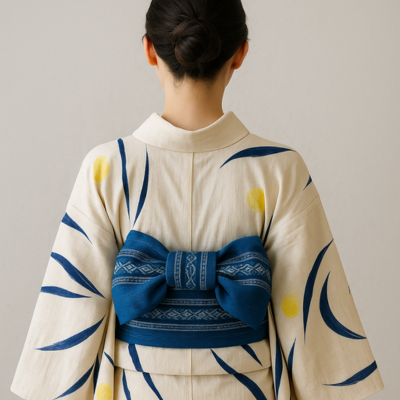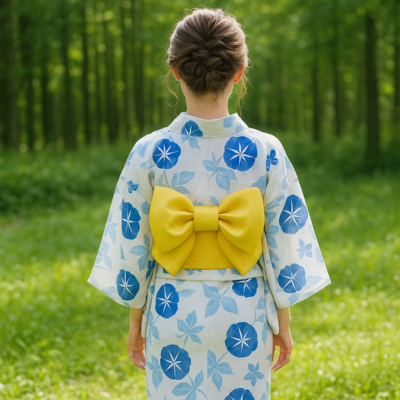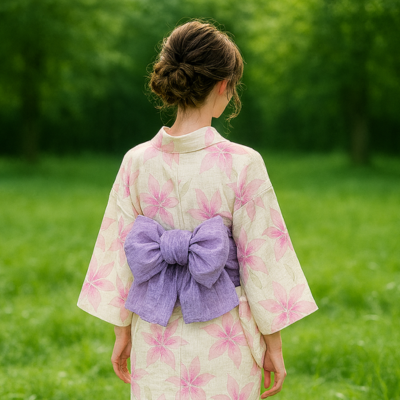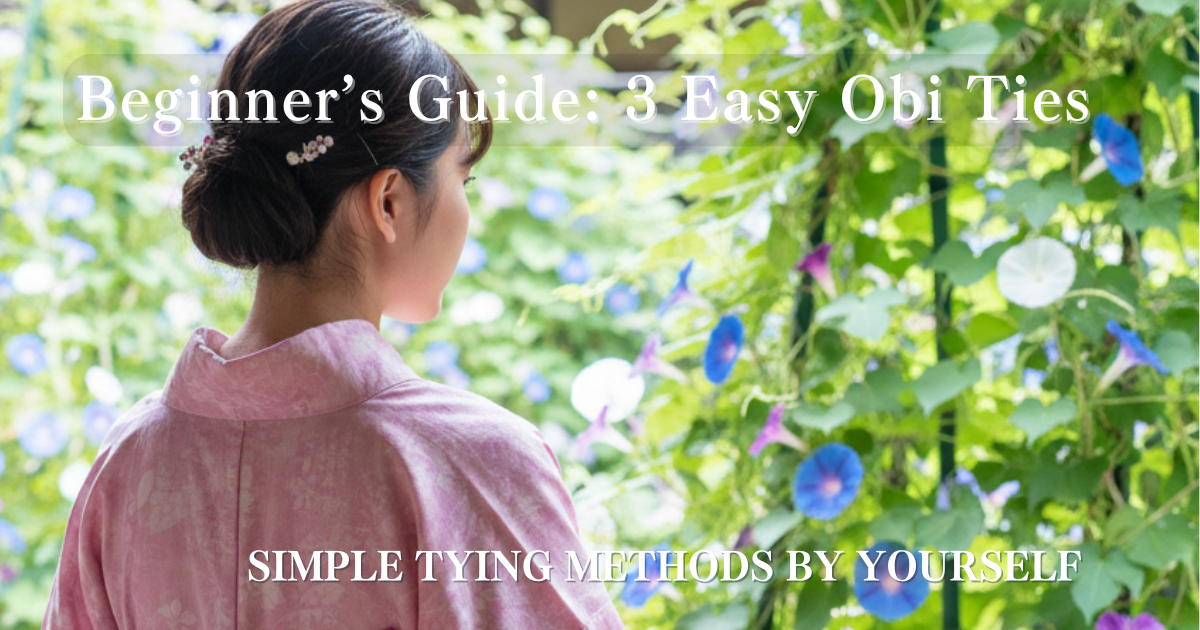When wearing a yukata, one of the biggest decisions is how to tie the obi (belt).
It may look complicated, but there are actually many cute obi styles that beginners can tie by themselves.
In this article, we’ll introduce three simple and stylish obi tying methods that are perfect for yukata:
the classic Bunko Musubi, the eye-catching Ribbon Style that can be done quickly,
and the elegant, understated Kai-no-Kuchi.
Each style is explained with photos and illustrations, so even first-timers can feel confident trying them!
You May Also Like
Obi Tying Made Easy|3 Styles Perfect for Yukata Beginners

Many yukata beginners often say that tying the obi looks difficult.
But in reality, if you choose a simple style that’s easy to adjust, you can create a cute look in just a few minutes.
Here, we’ll introduce three basic obi tying methods that are easy to remember and perfect for beginners.
Bunko Musubi|A Classic Yukata Obi Style with Perfect Balance
Among the many ways to tie a yukata obi, the Bunko Musubi is one of the most classic and popular styles.
Its large, wing-like shape on the back gives it a ribbon-like cuteness, while still maintaining an elegant and refined appearance—making it a favorite across all age groups.
Thanks to its simple structure and easy-to-shape form, it’s also very beginner-friendly.
It works well with both heko obi and hanhaba obi, and can be styled in various ways depending on the fabric, color, or pattern.
Whether you’re going for a casual yukata look or want something a bit more polished, this truly versatile style fits any occasion.

Ribbon Musubi|An Eye-Catching Obi Style That Shines from the Back
This style is a variation of the Bunko Musubi, featuring a soft, flipped ribbon-like shape at the back.
A slightly stiffer obi helps hold the shape neatly, creating a light and airy look that gives off a sweet and charming impression.
It’s especially popular among women in their teens and twenties.

Heko Obi Style|A Light and Fluffy Look with a Cute Gathered Knot
One of the biggest charms of the heko obi is its flexibility—there are few rules, so you can style it however you like.
Made from soft, lightweight fabric, it can be arranged to look fluffy and voluminous, or tied into a small and compact shape depending on your preference.
Its relaxed, effortless vibe makes it perfect for those who want to enjoy a more casual and natural yukata look.

How to Make Your Obi Look Neat and Beautiful

When it comes to tying your obi beautifully, it’s often the little things you keep in mind that make the biggest difference—not just the technique itself.
By paying attention to a few simple points, you can greatly improve the overall look and finish of your obi.
Align the center of the obi with your body
When you start wrapping the obi, make sure the center of the obi is aligned with the center of your body.
This ensures both sides are even in length, resulting in a balanced and beautiful knot.
Smooth out any wrinkles before tying
Before tightening the obi, use your hands to gently smooth out any wrinkles.
This will give the finished look a cleaner appearance.
For soft obi types like the heko obi, just a little smoothing makes a big difference.
Secure loose areas with an obijime or decorative cord
If the obi slips or loosens, use an obijime or decorative cord to hold it in place.
Not only does this add stability, but it also serves as a stylish accent.
Check your back in the mirror
Even if the front looks neat, the bow or ends at the back may be out of place.
Use a full-length mirror or a hand mirror to carefully check your back view at the end.
With just a little extra care, your yukata look can appear much more elegant and refined.
Even if you’re a beginner, don’t hesitate to give it a try!
Which Obi Works Best with Each Tying Style?

Each obi tying style works best with certain types of obi.
Here, we’ve put together a simple guide to show which obi types pair well with
Bunko Musubi, Ribbon Musubi, and Heko Obi Arrangements,
along with their key characteristics.
| Tying Style | Recommended Obi | Features |
|---|---|---|
| Bunko Musubi | Hanhaba Obi / Heko Obi | Easy to shape, neat and balanced finish with a classic look |
| Ribbon Musubi | Stiff Hanhaba Obi | Gorgeous from the back, perfect for photos |
| Heko Obi Arrangement | Soft Heko Obi | Freely arranged with a soft and cute silhouette |
If you’re not sure which obi to choose, refer to this compatibility chart.
The look of the final knot can vary greatly depending on the material and stiffness of the obi,
so be sure to choose one that suits your outfit, the occasion, and your personal style.
Summary
The style of your obi knot can completely change the impression of your yukata look.
Classic knots like the bunko musubi or ribbon style are easy for beginners and create a neat, stylish finish.
By choosing a knot that matches the type of obi and the mood you want to express, you can show off your own unique charm.
Even a small touch can instantly elevate your look from the back.
Why not add your favorite obi tying style to your yukata and enjoy summer festivals or fireworks in an even more beautiful way?
Related Articles You May Like
- How to Choose the Perfect Yukata: Colors, Sizes, and Patterns
(For first-time buyers) - Choosing the Right Obi: Hanhaba, Heko, or Pre-tied Styles?
(If you’re unsure which obi to pick) - How to Fold a Yukata Properly – Photo Guide
(Keep it neat even after wearing)


